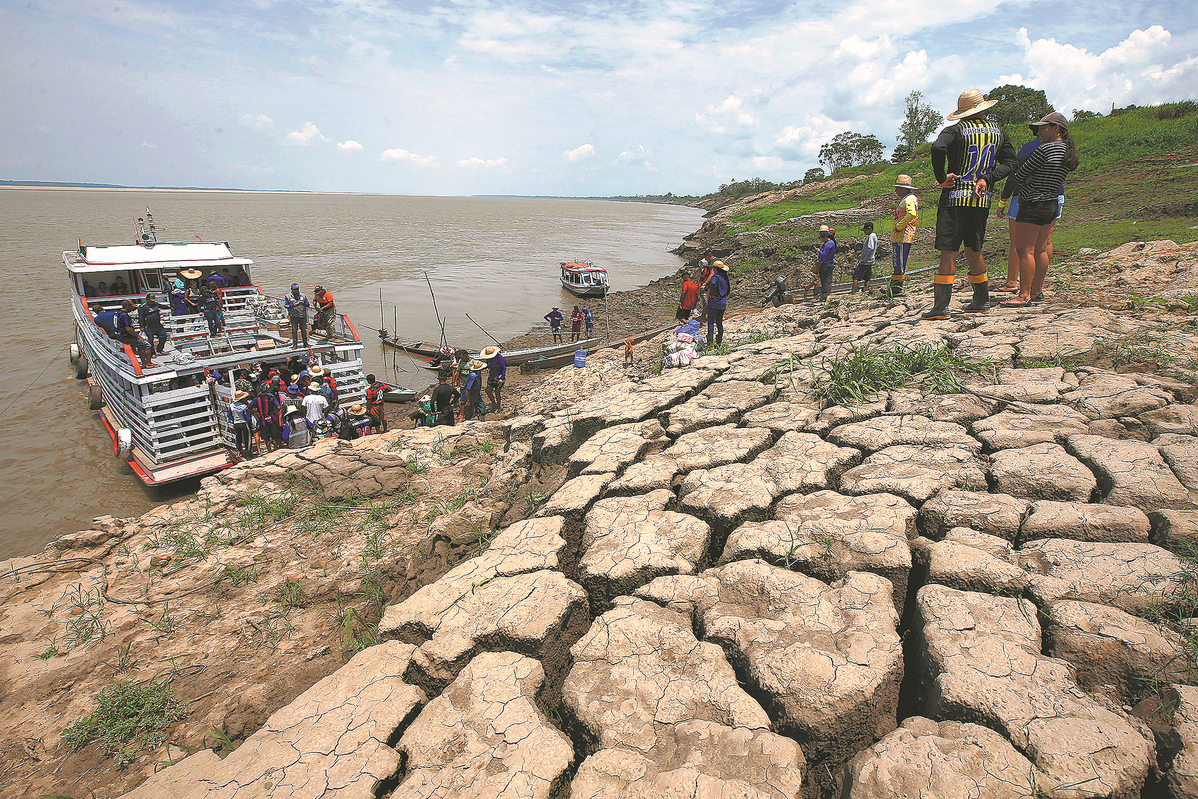Extreme weather, lowest rainfall take toll on Amazon
By SERGIO HELD and GERMAN SANCHEZ in Bogota | China Daily Global | Updated: 2024-01-16 10:51

The Amazon rainforest, home to an unparalleled diversity of flora and fauna, is under severe strain due to a combination of heat and the lowest rainfall in more than four decades. The extreme drought is having a devastating impact on the Amazon basin's rivers and biodiversity.
The picture of the region's water resources is grim. In Brazil's Amazonas state, rainfall ranged from 100 to 350 millimeters below average. This led to a significant drop in river levels, posing a threat to the livelihoods of indigenous communities that rely on the rivers and disrupting the natural functioning of the ecosystem.
"We have been dealing with this since last year," said Andres Losada, manager of Fundacion Amazonas Sin Limites (Amazon Without Limits Foundation).
"Last year's effect was caused by the 'La Nina' weather phenomenon, which impacted river levels all the way from their sources to their outflows into the ocean. It is catastrophic to see what climate change is doing to the entire ecosystem, including the river, affecting over 1 million people. In Peru, Colombia, and Brazil, we do not have effective programs against this type of phenomenon. The issue of global warming and river pollution affects our coexistence," he added.
The drought has triggered a humanitarian crisis across the Amazon region. On the Brazilian side of the rainforest alone, more than 590,000 people currently face a state of emergency, with many communities struggling to access drinking water and food.
Reduced river flows have hindered transportation, making it difficult for people to access essential services.
"The situation is really worrying," said Laura Gomez, an environmental engineer and researcher at Colombia's Alexander von Humboldt Biological Resources Research Institute. "The water levels are exceptionally low. It's an unprecedented situation with more sandbanks than water."
The drought has also eroded biodiversity, particularly across parts of the forest in Bolivia and Peru, and rivers like the Solimoes, Purus, Jurua, and Madeira in Brazil.
The reduced water flows and altered habitats have forced many species to relocate to more suitable areas, leading to an overall decline in biodiversity.
"A sequence of extreme heat waves is exacerbating the impact of the lack of precipitation, and the average temperature is abnormally high for the austral spring," said a recent report from the European Union's Joint Science Center published on Dec 20.
Austral spring denotes the season of spring in the southern hemisphere when the highest amount of ozone is lost. The season usually begins in September.
"From July to September 2023, all Amazon basin countries recorded the lowest rainfall in over 40 years. Satellite data showed widespread vegetation stress across the basin, particularly affecting southeastern regions and extending into Bolivia."
Experts warn these challenges may worsen in the coming months, as the expected El Nino phenomenon this year could intensify drought conditions and further endanger the fragile Amazon ecosystem.
Maryory Pantevis Giron, territorial director of Amazonas state at Corpoamazonia, the environmental regulatory body on the Colombian side of the Amazon, said more precise weather and environmental monitoring is needed to address future challenges.
The writers are freelance journalists for China Daily.
























